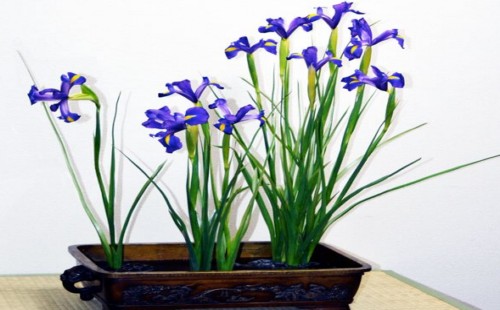How to bend ginkgo trees to make bonsai
Although ginkgo biloba is a deciduous tree, it has a straight trunk and smooth bark, especially the leaves are yellow before falling leaves, even if the fallen yellow leaves are spread on the ground. Therefore, ginkgo trees are often used in street greening, landscaping and other aspects, and ginkgo trees can also be made into bonsai appreciation. As the ginkgo tree integrates ornamental value, economic benefit and medicinal effect, it is more and more common to use it in bonsai.
However, the ginkgo trees used to make bonsai are also quite different from those used for greening and beautification. As a bonsai, ginkgo trees are required to be short and tall, while those used for greening and beautifying the environment are required to be tall and tall. However, the cultivation of ginkgo bonsai is often more difficult, in addition to dwarfing, but also can make curved shape, which is the biggest difference between ginkgo trees used in gardens. And ginkgo bonsai can be made into a separate landscape, so how to bend ginkgo trees to make bonsai?
The shape of the ginkgo tree in the process of making bonsai is mainly to bend its trunk according to the master's idea and intention. If you can bend both the branches and side branches, the bonsai will be more beautiful and have a better ornamental effect. However, the bending modeling of ginkgo trees also requires us to master certain knowledge and skills. The specific measures are as follows:
First of all, prepare some wire, generally use 16-18 thick wire, the original to make the length of the wire longer than the trunk or branches of the ginkgo tree. Then insert one end of the wire and fix it in the basin soil, and then wind the wire tightly up to the branch at an angle of about 45 degrees until it is close to the top of the branch. Then, according to the direction of the wire winding, twist the branches in the same direction to bend.
After completing the bending treatment of the twisted wire of the branches, the ginkgo tree should look more natural and not awkward, so that the wire and the branches are not equilateral triangular trees. However, in order to grasp the length of time for winding the wire, it is generally necessary to untie and remove it after a year. After 1 year, the bending part is also basically shaped, which is more in line with our modeling design needs of the branches. And it is generally required to remove the winding wire in time after 1 year, otherwise too long time will make the bending part larger, or even damage the bark and affect the tree potential.
Of course, the bending modeling treatment of the branches of ginkgo trees is only one aspect of the bonsai production process, and it is an important measure or link in bonsai modeling processing. If we want the ginkgo bonsai to shine brilliantly under the perfect shape, we also need to do a good job in pruning and plastic surgery. And the daily maintenance and management work can not be ignored. Only when all aspects of the work are done well, can we achieve the desired effect of ginkgo bonsai.
Time: 2019-06-06 Click:
- Prev

Bonsai how to break the pole and get the bend-the technique of taking the bend with the big pole
For bonsai trees, the bending of branches has always been a difficult aspect in the process of modeling processing, especially the bending of large poles. Because whether this link is handled well or not, it will directly affect the ornamental value of bonsai, and even the growth status. After all, taking the bend is one of the main means to build the bonsai skeleton.
- Next

How to reproduce blue iris
Blue kite tail leaves green, shaped like a sword, the design and color is very gorgeous, when open, such as flying swallows dance, beautiful and interesting, so it has a very high ornamental value. People often plant this kind of flowers and plants near the shallow water areas of gardens, parks, lakes and rivers and ponds, so that they can watch both flowers and leaves.
Related
- Fuxing push coffee new agricultural production and marketing class: lack of small-scale processing plants
- Jujube rice field leisure farm deep ploughing Yilan for five years to create a space for organic food and play
- Nongyu Farm-A trial of organic papaya for brave women with advanced technology
- Four points for attention in the prevention and control of diseases and insect pests of edible fungi
- How to add nutrient solution to Edible Fungi
- Is there any good way to control edible fungus mites?
- Open Inoculation Technology of Edible Fungi
- Is there any clever way to use fertilizer for edible fungus in winter?
- What agents are used to kill the pathogens of edible fungi in the mushroom shed?
- Rapid drying of Edible Fungi

